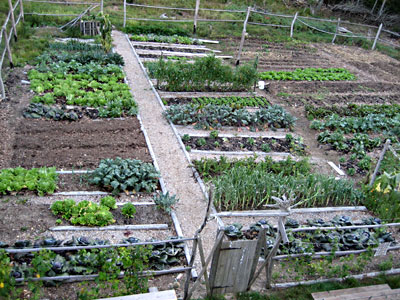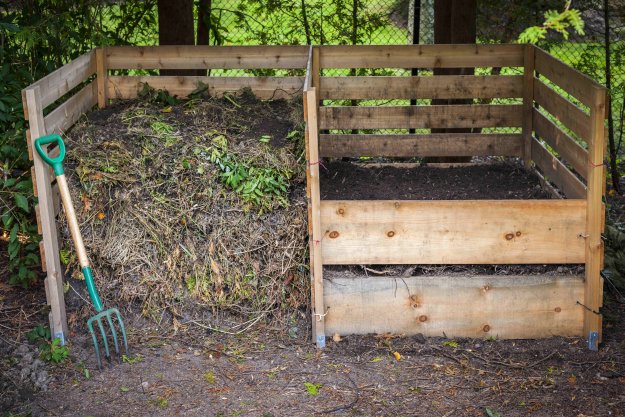Growing Fruits and Vegetables in Homestead Gardening
Growing Fruits and Vegetables in Homestead Gardening
Blog Article
Reveal the Keys to Creating a Beautiful and Productive Gardening Room
Creating a attractive and efficient gardening room is not just an issue of planting veggies and blossoms; it calls for a critical approach that includes different essential components. From choosing the right area based on sunshine and dirt type to thoughtfully developing your design and choosing suitable plants, each choice plays a pivotal function in the success of your yard. Additionally, ongoing maintenance is necessary to sustain its elegance and productivity. As you consider these variables, think about exactly how they link to open the full possibility of your horticulture undertakings. What specific approaches can raise your area past the normal?
Choosing the Right Location
Selecting the optimal place for your garden is vital to its success and overall visual appeal. The initial step in this process involves examining sunshine exposure, as the majority of plants call for at the very least 6 hours of direct sunlight daily (Homestead Gardening). A south-facing garden usually obtains one of the most light, while shaded locations can hamper growth and flowering
Additionally, take into consideration soil high quality and drainage. Well-draining dirt is necessary to protect against waterlogged origins, which can cause plant illness. Conducting a soil test can offer useful info concerning pH degrees and nutrition web content, allowing you to modify the soil accordingly.
Furthermore, distance to water resources is an additional element to consider - Homestead Gardening. Having simple accessibility to a hose pipe or irrigation system can simplify the watering procedure and urge regular plant treatment. Wind protection is additionally crucial; positioning your yard near frameworks, such as walls or fences, can shield it from severe winds that might damage fragile plants
Last but not least, take into consideration access for maintenance and harvesting. A well-placed yard enables for convenient accessibility, guaranteeing that you can easily tend to your plants without creating excessive anxiety or disturbance. Thoughtful location choice lays the foundation for a thriving garden.
Selecting Plants Wisely
When choosing plants for your yard, it's important to consider aspects such as environment, soil problems, and individual choices to ensure a efficient and harmonious space. A detailed understanding of your local environment will direct you in picking plants that flourish in your particular setting. For circumstances, choosing drought-resistant selections is advantageous in dry areas, while moisture-loving species might be better for areas with high rains.
Soil problems are equally important; carrying out a soil test can expose pH degrees and nutrient material, permitting you to pick plants that will grow. Indigenous plants are commonly an exceptional choice, as they are normally well-adapted to regional dirt types and need much less maintenance.
In addition, consider your horticulture objectives. Are you intending for a decorative display screen, a veggie yard, or maybe a mix of both? This will certainly influence your selections significantly. Show on your individual choices-- picking plants that resonate with your aesthetic tastes will certainly enhance your satisfaction and dedication to keeping your yard. By very carefully assessing these aspects, you can produce a thriving and diverse plant selection that boosts your horticulture experience.
Designing Your Yard Design
With an attentively selected plant option in hand, the following step is to develop a yard design that makes best use of Homepage both appeal and performance. Begin by examining the available room, taking into consideration aspects such as shade, wind, and sunlight patterns. A well-planned format ought to include numerous zones, consisting of locations for growing, paths, and perhaps seating.
Beginning with bigger plants or prime focus, such as trees or tall perennials, placed strategically to create aesthetic interest. Layer smaller sized plants in front to boost deepness and texture. Consider the growth behaviors of your picked plants; taller selections ought to be positioned at the back or facility of beds, while shorter ones can line the edges.
Incorporating paths not only promotes access for maintenance yet likewise welcomes expedition. Use materials that enhance the garden's total aesthetic, whether timber, gravel, or rock chips.
Furthermore, think of seasonal changes and just how your layout will look throughout the year. Including evergreens alongside seasonal flowers can ensure year-round charm. Inevitably, a properly designed garden format balances the all-natural charm of plants with functional considerations, causing an area that is both welcoming and effective.
Enhancing Dirt Health And Wellness

To enhance dirt wellness, begin by carrying out a dirt test to assess pH degrees, nutrient content, and dirt texture. This will certainly notify your modifications. Integrate raw material such as garden compost, well-rotted manure, or leaf mold and mildew to improve soil structure, water retention, and microbial task. Additionally, practicing crop turning can avoid nutrition exhaustion and lower insect and condition pressures.
Mulching is an additional reliable approach; it not just conserves moisture yet also suppresses weeds and gradually improves the dirt as it damages down. Avoiding too much tillage is crucial, as it can interfere with dirt framework and harm helpful organisms. Instead, take on no-till or marginal husbandry methods to maintain soil stability.

Keeping Your Yard Efficiently
A well-maintained yard provides pride and productivity, needing consistent focus to make certain that plants flourish and look at more info the landscape stays inviting. Reliable yard upkeep involves numerous essential practices that improve the health and wellness of your plants and the general aesthetic of your room.
Regular watering is important; however, it is necessary to customize your watering schedule based upon the certain needs of your plants and regional climate problems. Mulching can assist preserve dampness, subdue weeds, and manage dirt temperature why not check here level. In addition, timely weeding prevents competitors for nutrients and sources, ensuring that your plants grow.
Trimming is an additional crucial task. It urges healthy development, eliminates dead or unhealthy branches, and shapes plants to keep an appealing framework. Additionally, keeping track of for bugs and conditions is essential; early detection and intervention can save your plants from considerable damage.
Fertilization should be implemented thoughtfully, making use of organic options whenever possible to advertise lasting soil health. Lastly, seasonal jobs such as planting, dividing perennials, and getting ready for wintertime will certainly ensure your garden remains lively year-round. By adhering to these techniques diligently, you can cultivate a garden that is both productive and lovely.
Final Thought
Choosing a suitable location with ample sunlight, picking appropriate plants, developing a cosmetically pleasing design, boosting soil health and wellness, and making sure routine upkeep are necessary components. By integrating these methods, one can cultivate a thriving yard that not only boosts the landscape however additionally promotes ecological balance and sustainability.
From picking the right location based on sunshine and soil type to thoughtfully designing your layout and picking suitable plants, each decision plays a crucial function in the success of your yard. Well-draining soil is important to prevent water logged origins, which can lead to plant diseases.When choosing plants for your yard, it's necessary to take into consideration factors such as climate, soil problems, and personal preferences to guarantee a harmonious and effective space. Eventually, a well-designed garden layout balances the natural beauty of plants with useful considerations, resulting in an area that is both welcoming and productive.

Report this page